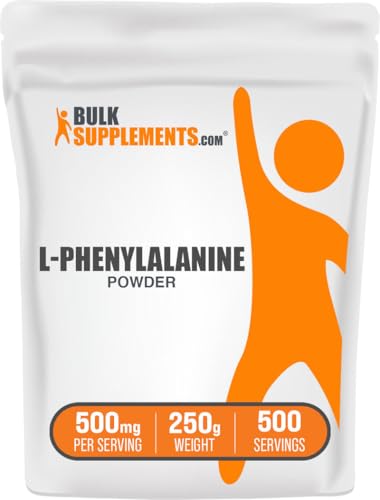Phenylalanine & Diabetes: What You Need to Know
Quick Summary: Research suggests higher levels of the amino acid phenylalanine in your blood may be linked to a slightly increased risk of developing type 2 diabetes. This study looked at many other studies to find this connection.
What The Research Found
This research, which combined data from many previous studies, found a link between higher levels of phenylalanine in the blood and a greater chance of developing type 2 diabetes. The study found that for every increase in phenylalanine levels, the risk of type 2 diabetes went up by 26%. Other amino acids, like leucine and tyrosine, also showed a similar link.
Study Details
- Who was studied: The researchers looked at data from 8,000 people, including 1,940 who had type 2 diabetes.
- How long: The study looked at data from other studies, some of which followed people over time to see who developed diabetes.
- What they took: This study didn't involve people taking anything. It looked at the levels of different substances (metabolites) already in people's blood.
What This Means For You
This research suggests that high levels of phenylalanine might be a sign of a higher risk of type 2 diabetes. However, it doesn't mean that phenylalanine causes diabetes. It's more like a clue.
- Focus on overall health: Instead of worrying about phenylalanine alone, focus on a healthy diet, regular exercise, and maintaining a healthy weight.
- Talk to your doctor: If you're concerned about your risk of diabetes, talk to your doctor. They can help you understand your risk factors and recommend ways to stay healthy.
Study Limitations
It's important to remember:
- It's not a cause-and-effect study: This study shows a connection, but it doesn't prove that phenylalanine causes diabetes.
- Other factors matter: Many things can affect your risk of diabetes, like your diet, how active you are, and your family history.
- More research is needed: Scientists need to do more studies to understand the role of phenylalanine and other substances in diabetes.
Technical Analysis Details
Key Findings
This meta-analysis identified phenylalanine as a metabolite associated with a 26% higher risk of developing type 2 diabetes (T2D) per standard deviation (SD) increase in blood concentration (pooled relative risk [RR] 1.26 [1.10–1.44]; I² = 56%). Higher levels of other amino acids (e.g., isoleucine, leucine, valine, tyrosine) and metabolites (hexoses, phospholipids, triglycerides) were also linked to elevated T2D risk. Conversely, glycine and glutamine showed inverse associations (RR 0.89 and 0.85, respectively). The study highlights metabolomics as a tool for identifying biomarkers in T2D progression but does not establish causation.
Study Design
The study was a systematic review and meta-analysis of 27 cross-sectional and 19 prospective human studies published up to August 2015. The meta-analysis focused on metabolites with data from ≥3 prospective studies, pooling results from 8 studies involving 8,000 participants (1,940 T2D cases). Metabolite concentrations were measured via high-throughput metabolomics techniques. Study-specific SD differences in metabolite levels were used to calculate multivariable-adjusted RRs for T2D incidence.
Dosage & Administration
No specific dosages or administration methods were tested for phenylalanine. The study analyzed endogenous blood metabolite concentrations, not supplementation. Phenylalanine levels were assessed as biomarkers, not interventions.
Results & Efficacy
Phenylalanine showed a statistically significant positive association with T2D risk (RR 1.26 [1.10–1.44], p < 0.001). Heterogeneity across studies was moderate (I² = 56%). Other amino acids, including valine (RR 1.35), leucine (RR 1.36), and tyrosine (RR 1.36), demonstrated stronger effect sizes. Glycine (RR 0.89 [0.81–0.96]) and glutamine (RR 0.85 [0.82–0.89]) were inversely linked to T2D risk. Results were adjusted for variables like age, sex, and BMI, but the study did not evaluate phenylalanine supplementation’s efficacy.
Limitations
- Observational design limits causal inference.
- Heterogeneity in metabolite measurement techniques and population demographics (I² = 56% for phenylalanine).
- Confounding factors (e.g., diet, physical activity) may influence metabolite levels.
- Lack of intervention data on phenylalanine supplementation or dietary modulation.
- Follow-up duration and baseline health status of participants were not uniformly reported.
Clinical Relevance
This study suggests elevated phenylalanine levels may serve as a biomarker for T2D risk, alongside other amino acids and metabolites. However, it does not support phenylalanine supplementation for disease prevention or treatment. Clinicians should interpret these findings cautiously, as the research focuses on associations rather than interventions. For supplement users, the results underscore the importance of metabolomic profiling in assessing diabetes risk but do not advocate altering phenylalanine intake based solely on this evidence. Further research is needed to determine whether metabolite levels are modifiable through diet or lifestyle changes and whether such modifications impact T2D outcomes.
Note: The study analyzed endogenous metabolite concentrations, not exogenous supplementation. Practical applications remain limited to risk stratification rather than therapeutic guidance.
Original Study Reference
Metabolomics in Prediabetes and Diabetes: A Systematic Review and Meta-analysis.
Source: PubMed
Published: 2016
📄 Read Full Study (PMID: 27208380)




